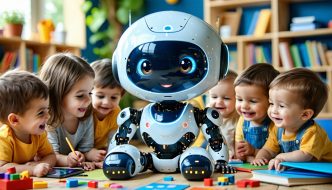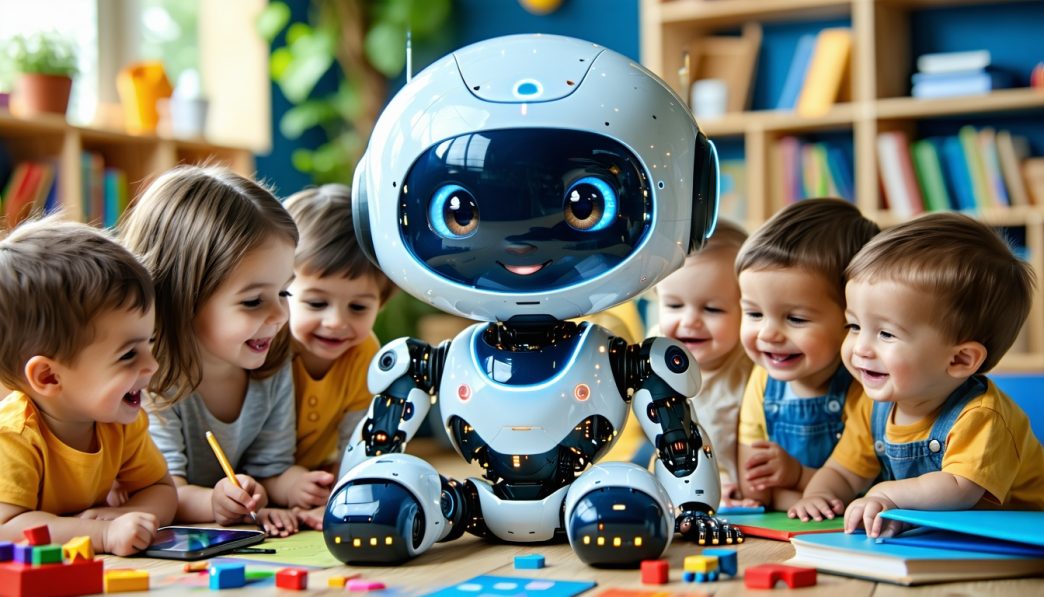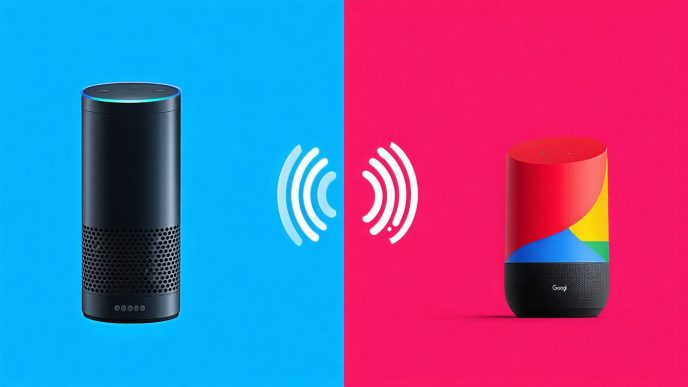Introduction to AI Assistants for Children
Defining AI Assistants
AI assistants are software applications that utilize artificial intelligence to perform tasks, respond to user commands, and interact with individuals in a conversational manner. These virtual assistants can interpret voice commands, answer questions, and manage various functions within smart homes. They are designed to facilitate tasks like scheduling, playing music, and controlling home appliances, contributing to a more automated lifestyle.
AI assistants come in different forms, ranging from simple applications on smartphones to more complex systems integrated into smart home devices. Their ability to understand natural language and adapt to user preferences makes them increasingly popular, especially in households with children. The integration of such technology can provide both educational support and entertainment options, which are appealing aspects for families exploring the benefits of AI assistants and kids.
Growing Trend of AI Assistants in Homes
The adoption of AI assistants in homes has surged in recent years, particularly among tech-savvy families. As these devices become more accessible and affordable, they are increasingly being integrated into daily life. The table below highlights the growth in AI ownership among households over recent years.
| Year | Percentage of Households with AI Assistants |
|---|---|
| 2018 | 20% |
| 2019 | 40% |
| 2020 | 55% |
| 2021 | 70% |
| 2022 | 80% |
As indicated, over 80% of households now utilize some form of AI assistant, reflecting a significant increase in reliance on this technology. Families find AI assistants useful for enhancing convenience and enabling seamless interactions across devices. More importantly, these assistants can serve as tools for engaging children in learning and play.
The growing trend of AI assistants supports various functions in smart homes, making them valuable for parents who seek to balance family needs with modern technology. For more insights into how AI assistants link with smart homes, check out our article on AI assistants and smart homes.
Benefits of AI Assistants for Children
AI assistants can offer numerous advantages for children in various aspects of their daily lives. This section highlights three primary benefits: educational support, entertainment and interaction, and the development of cognitive skills.
Educational Support
AI assistants can serve as valuable tools for enhancing educational experiences. They can provide instant access to information, helping children with homework and research. Whether answering questions related to science, math, or literature, AI assistants can support learning in real-time.
| Educational Feature | Description |
|---|---|
| Instant Answers | Provides quick responses to questions, promoting curiosity and learning. |
| Interactive Learning | Engages children with quizzes, games, and fun facts, making education enjoyable. |
| Language Assistance | Aids in learning new languages through speech recognition and pronunciation help. |
Using AI assistants, children can receive personalized learning experiences tailored to their specific interests and needs.
Entertainment and Interaction
AI assistants are not only educational but also serve as interactive companions for children. They can play games, tell stories, and sing songs, providing entertainment that keeps kids engaged. This interaction can help children develop social skills and emotional intelligence as they learn to communicate effectively with the technology.
| Entertainment Feature | Description |
|---|---|
| Games | Offers a variety of games that stimulate critical thinking and problem-solving. |
| Storytelling | Reads stories aloud, encouraging a love for reading and imagination. |
| Music | Plays children’s favorite songs and introduces them to new music genres. |
The versatility of AI assistants makes them a compelling addition to a child’s daily routine.
Development of Cognitive Skills
By interacting with AI assistants, children can enhance their cognitive skills in various ways. These assistants can encourage critical thinking, creativity, and decision-making through interactive dialogues and activities.
| Cognitive Skill | How AI Assistants Contribute |
|---|---|
| Problem-Solving | Engages children with puzzles and challenges that require logical thinking. |
| Creativity | Promotes imaginative play and storytelling, boosting creative expression. |
| Decision-Making | Offers scenarios where children must choose actions, enhancing decision-making capabilities. |
The active engagement with AI can stimulate a child’s mental development, preparing them for future learning opportunities.
AI assistants have the potential to enrich children’s lives through educational support, interactive entertainment, and cognitive skill development. With the right usage, these technologies can facilitate positive experiences that contribute to a child’s growth and learning journey. For further insights, consider exploring more about ai assistants and their uses in various contexts, including voice-powered robots and ai assistants in smart homes.
Concerns about AI Assistants for Children
While AI assistants offer numerous benefits to families and children, they also raise important concerns that must be considered. These concerns include privacy and data security, dependency on technology, and the potential developmental impact on children.
Privacy and Data Security
One of the fundamental concerns regarding AI assistants and kids is the issue of privacy. AI devices often require access to personal data to function effectively. This includes voice recordings, search history, and personal preferences, which can raise significant concerns about data security. Parents need to be aware of how their children’s data is being collected, stored, and potentially shared.
| Concern | Description | Potential Impact |
|---|---|---|
| Data Collection | AI assistants may store personal information. | Risk of unauthorized access or data breaches. |
| Voice Recordings | Conversations may be recorded and stored. | Possible misuse of recorded data. |
| Third-Party Access | Data may be shared with third parties. | Lack of control over personal information. |
For more information on privacy issues related to AI devices, refer to our article on privacy and ai assistants.
Dependency on Technology
Another concern is the potential for children to develop a dependency on technology. Relying on AI assistants for answers, entertainment, and task execution can hinder children’s ability to think critically and engage in problem-solving. As children increasingly depend on these devices, they may miss opportunities for creative thinking and independent learning.
| Dependency Type | Description | Consequence |
|---|---|---|
| Information Dependency | Relying on AI for answers. | Reduced critical thinking skills. |
| Task Completion | Allowing AI to perform simple tasks. | Lessened independence in daily activities. |
Understanding these dependency issues is crucial for parents who want to encourage healthy technology use among their children.
Developmental Impact
AI assistants may also have a broader developmental impact on children. These devices can influence social interactions and communication skills. Children who frequently interact with AI may have fewer opportunities to engage in meaningful conversations with peers and adults, potentially affecting their social development.
| Developmental Aspect | Potential Impact |
|---|---|
| Social Skills | Reduced face-to-face interaction may hinder communication abilities. |
| Language Acquisition | Limited vocabulary development if reliant on AI for information. |
| Emotional Understanding | Challenges in developing empathy through human interactions. |
Parents should consider monitoring how AI assistants are integrated into their children’s lives to foster healthy social and emotional growth. This discussion around AI assistants and kids is essential for ensuring that technology supports rather than hinders development.
For more insights into AI assistant functionalities, visit our articles on ai assistants and smart homes and ai assistant use cases.
Safety Measures and Guidelines
When integrating AI assistants into homes with children, it is essential to implement safety measures and guidelines that ensure a secure and beneficial experience. Here are key strategies that caregivers can adopt.
Parental Controls and Monitoring
Utilizing parental controls is an effective way to manage and monitor how children interact with AI assistants. Many AI systems offer built-in features that allow parents to filter content, restrict access to specific functions, and set usage times. By actively engaging with these controls, parents can help ensure that children are exposed to appropriate content.
| Feature | Description |
|---|---|
| Content Filtering | Blocks inappropriate content from being accessed. |
| Voice Recognition | Limits access to known users, preventing others from using the assistant without permission. |
| Usage Reports | Provides parents with insights into how frequently the AI assistant is used and what tasks are performed. |
For a deeper understanding of the implications of privacy and data security with AI systems, refer to our article on privacy and ai assistants.
Setting Boundaries and Usage Limits
Establishing clear boundaries around the use of AI assistants is crucial for ensuring healthy engagement. Setting usage limits can help prevent children from developing an over-reliance on these technologies. Parents should consider implementing a schedule that designates specific times for using the AI assistant, balancing technology use with other activities.
| Guidelines | Recommendations |
|---|---|
| Screen Time | Limit usage to specific time slots per day. |
| Task-Based Use | Allow use primarily for educational or entertainment tasks during designated times. |
| Device-Free Zones | Establish certain areas in the home where AI assistants should not be used, like during family meals or while studying. |
Establishing these limits can foster a more balanced interaction with technology. Additional information on the potential impacts of AI can be found in our ai assistant use cases article.
Educating Children about Online Safety
Teaching children about responsible interaction with AI assistants is vital. Educating them on online safety protocols can empower them to use technology wisely. Parents should explain the importance of not sharing personal information and recognizing when to ask for help if they encounter something concerning.
| Educational Topics | Importance |
|---|---|
| Personal Information Privacy | Helps children understand the risks of sharing sensitive data. |
| Recognizing Inappropriate Content | Encourages critical thinking about what they encounter. |
| Asking for Help | Instills confidence in seeking parental guidance when needed. |
By fostering an environment of open communication about technology, parents can ensure that children feel comfortable discussing their experiences with AI assistants. For additional strategies for safe interactions, consider our article on ai assistants and smart homes.
Best Practices for Using AI Assistants with Children
To ensure a safe and enriching experience when utilizing AI assistants with children, it is vital for parents and guardians to adopt best practices. This includes considerations around content, supervision, and effective communication.
Age-Appropriate Content
Selecting age-appropriate content is crucial when introducing AI assistants to children. AI assistants can access a vast range of information and entertainment, but not all of it is suitable for young users. Parents should utilize settings or features that filter out inappropriate material, ensuring their children interact with content that is educational, safe, and engaging.
| Age Group | Recommended Content Types |
|---|---|
| 0-3 years | Nursery rhymes, simple stories, interactive songs |
| 4-7 years | Educational games, storytelling, basic learning apps |
| 8-12 years | Trivia, advanced learning tools, informative podcasts |
Supervised Usage
Supervised usage of AI assistants is an important practice to maintain security and appropriate interaction. Parents should engage with their children while they use these devices to explain their functionality and address queries. Active participation helps in reinforcing learning and allows caregivers to monitor interactions, reducing risks associated with unsolicited information.
| Supervision Strategy | Description |
|---|---|
| Co-Usage | Parents using the assistant with their child to guide exploration. |
| Time Limits | Setting specific times for usage to prevent overreliance on technology. |
| Discussion | Regular conversations about what the child learns or interacts with. |
Communication and Feedback
Clear communication about the role of AI assistants is essential for young users. Parents should discuss how these devices are tools to aid learning and fun, rather than replacements for human interactions. Encouraging feedback helps children express their thoughts and feelings about their experiences, fostering a healthy relationship with technology.
| Communication Tips | Actions |
|---|---|
| Encourage Questions | Prompt children to ask about new information they discover. |
| Share Experiences | Parents can share their own experiences with AI to build understanding. |
| Praise Interaction | Acknowledge positive use of the assistant to reinforce beneficial behavior. |
By following these best practices, families can maximize the benefits of utilizing AI assistants within the home while ensuring a secure and supportive environment for children. Additional insights can be found in our articles on ai assistants and kids and privacy and ai assistants.
Case Studies and Research Findings
Studies on AI Assistant Usage in Child Development
Recent studies have been conducted to investigate the impact of AI assistants on child development. These studies aim to provide insights into how these technologies influence various aspects of a child’s growth and learning processes.
| Study | Focus Area | Findings |
|---|---|---|
| Study A | Educational engagement | Found that children who interacted with AI assistants demonstrated improved engagement in educational activities. |
| Study B | Social skills development | Indicated that children using AI assistants exhibited enhanced social interactions through voice chats and responsive queries. |
| Study C | Cognitive skills | Showed positive effects on problem-solving abilities when children used AI assistants for educational games. |
The findings suggest that AI assistants can serve as valuable tools to support children’s learning and development, making them more interactive and engaging.
Positive and Negative Impact Observations
The impact of AI assistants on children has been observed both positively and negatively. Understanding these impacts is crucial for parents and educators.
Positive Observations:
-
Enhanced Learning: Many children benefit from interactive learning experiences, improving their understanding of concepts and fostering curiosity.
-
Interactive Play: AI assistants promote play-based learning, assisting in the development of cognitive skills through games and quizzes.
-
Support for Daily Tasks: Children can learn basic organization skills by using AI assistants to set reminders and schedules.
Negative Observations:
-
Over-Reliance on Technology: Some studies indicate that children may become overly reliant on AI assistants, potentially diminishing their problem-solving capabilities.
-
Privacy Concerns: Concerns arise around smart devices collecting data, leading to questions about privacy and information security, particularly with children involved. For more details on these concerns, refer to our article on privacy and ai assistants.
-
Social Interaction Reduction: Excessive interaction with AI assistants may detract from face-to-face social skills development, as children might prefer conversing with technology over peers.
A balanced view of these findings is essential for families navigating the use of ai assistants in their households. By recognizing both the enhancements and challenges, strategies can be developed to maximize the benefits while minimizing the drawbacks.
Future Trends and Recommendations
Evolving Role of AI in Childcare
As technology continues to advance, the role of AI assistants in childcare will evolve significantly. AI systems are becoming more integrated into everyday family life. These tools offer personalized learning experiences catered to individual needs, which enhances their educational impact. Predictions suggest that AI assistants will become increasingly capable of understanding children’s preferences and learning styles, leading to tailored interactions that promote cognitive growth.
Emerging developments in natural language processing and machine learning will allow AI systems to engage in more meaningful dialogues with children. This capability will help foster emotional and social skills alongside cognitive development. Families may also see AI assistants adapting to the evolving dynamics of parenting, providing support in various aspects, from homework help to emotional comfort.
Ethical Considerations
The increasing use of AI assistants raises several ethical questions regarding children’s data privacy and security. Parents must remain vigilant about how their children’s interactions with these technologies contribute to data collection practices. Concerns about surveillance and data usage are prevalent, necessitating transparent policies surrounding privacy.
Ethical considerations also include the potential biases embedded in AI systems, which can influence a child’s learning experiences. It is crucial for developers to ensure that AI assistants are programmed to be inclusive and fair, promoting a diverse understanding of the world.
| Ethical Concern | Description |
|---|---|
| Data Privacy | Safeguarding children’s personal information and usage data. |
| Bias in AI | Ensuring fairness and diversity in educational content. |
| Surveillance Implications | Understanding the effects of constant monitoring on children. |
Balancing Technology with Traditional Learning
While AI assistants provide valuable support in educational environments, a balanced approach is essential for holistic development. Families should encourage a blend of technology and traditional learning methods. Engaging with physical books, outdoor activities, and hands-on projects will complement the digital interactions children have with AI technology.
The ideal approach involves setting guidelines for technology usage while promoting activities that foster creativity, problem-solving, and social interaction. Developing a routine that incorporates both AI-assisted learning and traditional methods can help ensure well-rounded growth.
For more insights on how AI assistants can facilitate family life, explore our article on ai assistants in appliances and the various ai assistant use cases available today.















